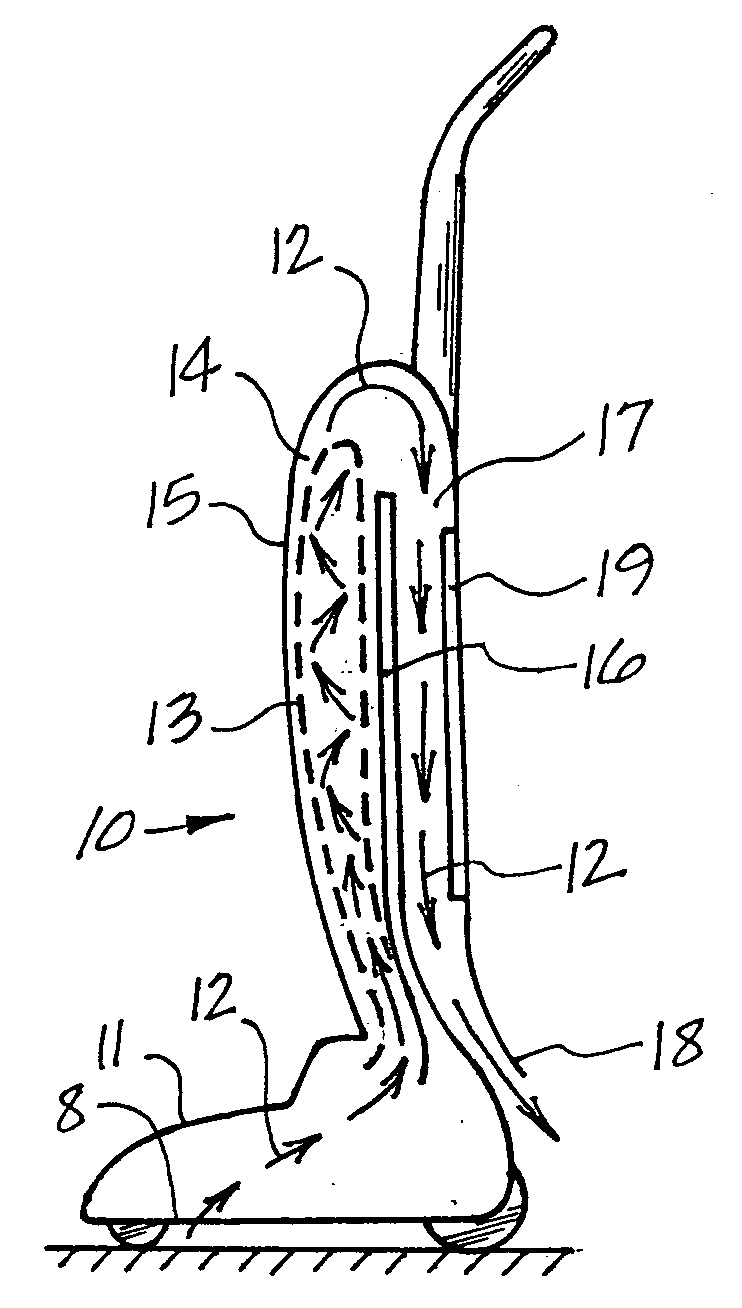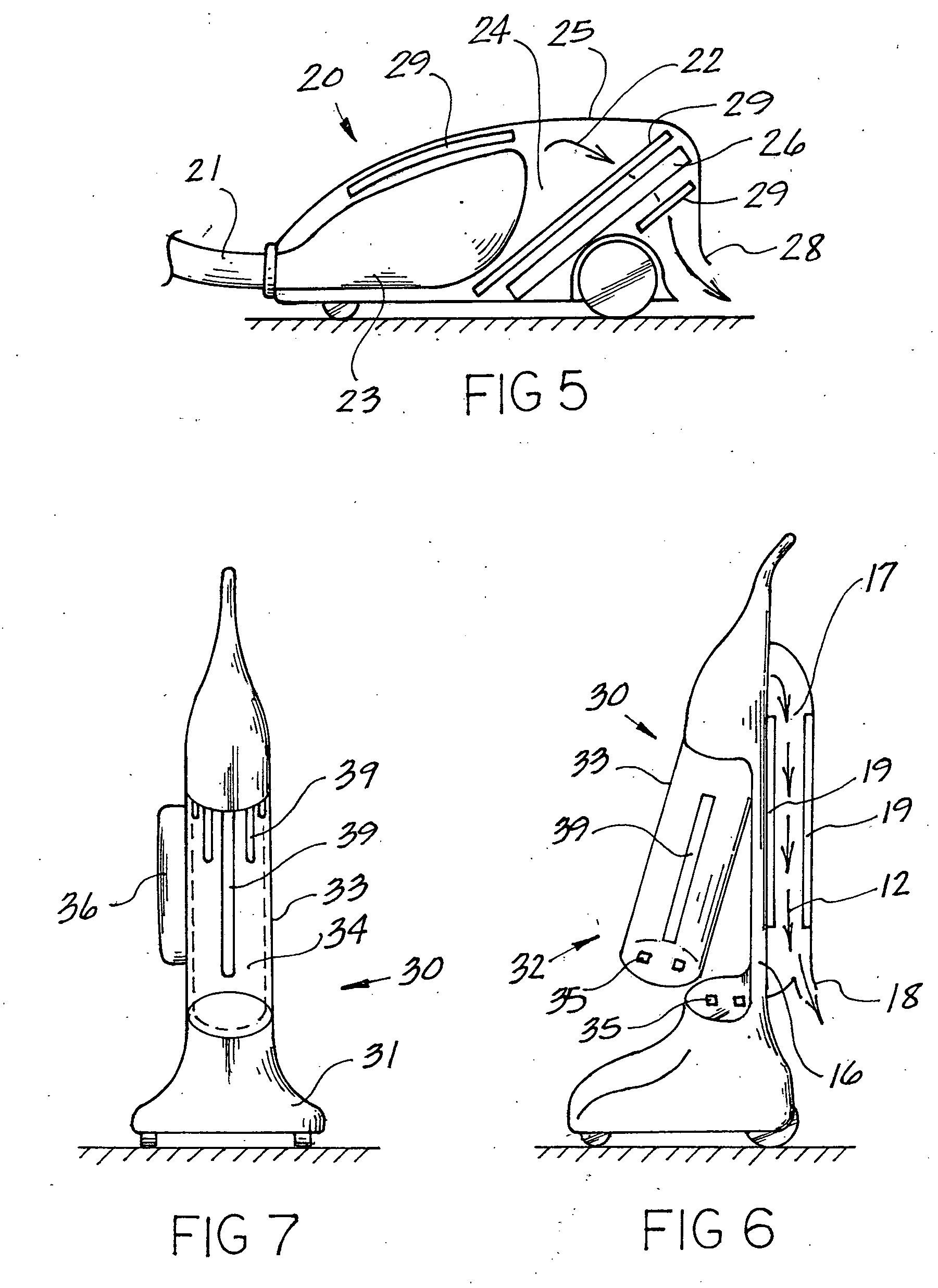Vacuum apparatus and method using ultraviolet radiation for sanitization
a vacuum apparatus and ultraviolet radiation technology, applied in the direction of auxillary pretreatment, separation process, filtration separation, etc., can solve the problems of bacteria remaining a constant ongoing problem, unable to be trapped in conventional filter means, and causing the discharge of contaminated air
- Summary
- Abstract
- Description
- Claims
- Application Information
AI Technical Summary
Benefits of technology
Problems solved by technology
Method used
Image
Examples
Embodiment Construction
[0049] Referring to FIG. 1, a typical upright bag vacuum 10 is shown, in which the head 11 is placed adjacent to the surface desired to be vacuumed, so that intake port 8 is adjacent to said surface. All vacuums described herein and below have an intake port, through which air first moves into the vacuum cleaner. The air entering into the vacuum cleaner is generally contaminated with biological matter that can pose a health hazard if breathed or redeposited in the area being vacuumed.
[0050] Air enters the intake port 8 and is directed along an air pathway 12 into the collector or bag 13, which traps particulate matter of certain sizes that are present in the air stream 12, as the air stream moves through the lining of the bag 13. As is shown in FIG. 1, the bag 13 is fully contained within a first chamber 14, where said chamber 14 comprises a portion of the interior of the upright canister 15. The bag 13 provides a filter means, whereby air escaping through the porous openings in th...
PUM
| Property | Measurement | Unit |
|---|---|---|
| sizes | aaaaa | aaaaa |
| volumes | aaaaa | aaaaa |
| length | aaaaa | aaaaa |
Abstract
Description
Claims
Application Information
 Login to View More
Login to View More - R&D
- Intellectual Property
- Life Sciences
- Materials
- Tech Scout
- Unparalleled Data Quality
- Higher Quality Content
- 60% Fewer Hallucinations
Browse by: Latest US Patents, China's latest patents, Technical Efficacy Thesaurus, Application Domain, Technology Topic, Popular Technical Reports.
© 2025 PatSnap. All rights reserved.Legal|Privacy policy|Modern Slavery Act Transparency Statement|Sitemap|About US| Contact US: help@patsnap.com



